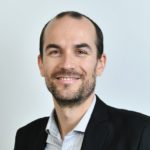Link to Pubmed [PMID] – 25378339
Nucleic Acids Res. 2014 Dec;42(21):13194-205
The mechanisms of gene amplification in tumour cells are poorly understood and the relationship between extrachromosomal DNA molecules, named double minutes (dmins), and intrachromosomal homogeneously staining regions (hsr) is not documented at nucleotide resolution. Using fluorescent in situ hybridization and whole genome sequencing, we studied a xenografted human oligodendroglioma where the co-amplification of the EGFR and MYC loci was present in the form of dmins at early passages and of an hsr at later passages. The amplified regions underwent multiple rearrangements and deletions during the formation of the dmins and their transformation into hsr. In both forms of amplification, non-homologous end-joining and microhomology-mediated end-joining rather than replication repair mechanisms prevailed in fusions. Small fragments, some of a few tens of base pairs, were associated in contigs. They came from clusters of breakpoints localized hundreds of kilobases apart in the amplified regions. The characteristics of some pairs of junctions suggest that at least some fragments were not fused randomly but could result from the concomitant repair of neighbouring breakpoints during the interaction of remote DNA sequences. This characterization at nucleotide resolution of the transition between extra- and intrachromosome amplifications highlights a hitherto uncharacterized organization of the amplified regions suggesting the involvement of new mechanisms in their formation.
